本文由EVA Studio授权mooool发表,欢迎转发,禁止以mooool编辑版本转载。
Thanks EVA Studio for authorizing the publication of the project on mooool, Text description provided by EVA Studio.
EVA Studio:Tapis Rouge是海地Carrefour – Feuilles的根据LAMIKA项目建造的几个公共场所之一。LAMIKA是海地克里奥尔语中“我的社区生活更美好”的缩写。该项目由美国红十字会资助,由全球社区组织开发,旨在通过包容的方式构建和促进社会凝聚力的多功能空间。 Carrefour-Feuilles是2010年地震中遭受大面积破坏的众多非正式社区之一。依附在峡谷斜坡上的房屋缺乏电力、自来水和卫生等基本服务设施,几乎没有正式的基础设施,只有通过蜿蜒于斜坡上的狭窄走廊网络才能进入毗邻的住宅。社交生活通常发生在狭小的角落和相邻房屋的墙壁之间。 地震发生后,Tapis Rouge曾经是流离失所者的帐篷营地。它坐落在一个斜坡的顶部,可以俯瞰两边的峡谷,也是通往下面小巷和房屋住宅的入口。
EVA Studio:Tapis Rouge is one of several public spaces in Carrefour-Feuilles, Haiti, built under program LAMIKA, whose acronym stands for “A better life in my neighbourhood” in Haitian Creole. The program, funded by the American Red Cross and implemented by Global Communities, aims to construct multifunctional spaces that facilitate and promote social cohesion through an inclusive approach. Carrefour-Feuilles is one of the many informal neighbourhoods which suffered extensive damage in the 2010 earthquake. The houses clinging to the slopes of the ravine lack basic services such as electricity, running water and sanitation. There is little formal infrastructure and the cheek by jowl homes are only accessible by a network of narrow corridors that wind up the slope. It is among the tight corners and between the walls of neighbouring houses that social life usually takes place. After the earthquake, the site of Tapis Rouge used to be a tent camp for displaced people. It sits at the top of a slope overlooking the ravines either side and it marks the entrance to the alleyways and homes below.
设计本身就是以社区为导向的,并将公共空间理解为是一种人类学的基础,身份认同和社会关系都由此发展而来。这个公共空间通过参与式的方式、设置空间的策略以及将社区参与置于设计过程的核心,旨在赋予当地社区变革力量,并为居民提供一种所有权、身份认同感和自豪感。我们的目标是创造一个更安全、更清洁的环境,这将有助于减少该地区的犯罪、暴力和反社会行为。
The design itself is inherently community-oriented and understands public space as an anthropological ground from which identity and social relations grow. Through a participatory approach, PlaceMaking strategies and through placing community engagement at the core of the design process, this public space aims to give transformative power to a local community and to provide the residents with a sense of ownership, identity, and pride. The goal was to create a safer and cleaner environment, which would help reduce crime, violence, and anti-social behaviour in the area.
Tapis Rouge坐落在一座小山上,这里是一个非正式社区的中心地带,该社区横跨两个相邻峡谷的斜坡。它被紧靠山坡的煤渣砌块房屋和连接它们的狭窄走廊和小巷所包围。该项目连接到这个现有的系统,以及其他公共空间和一条主干道,作为LAMIKA项目的一部分,这条主干道也已经得到了改善。
Tapis Rouge rests atop a hill, at the centre of an informal neighbourhood which has sprawled across the slopes of two adjacent ravines. It is surrounded by the cinder-block houses clinging to the hillside, and the network of narrow corridors and alleyways that link them together. The project connects to this existing system as well as other public spaces and a main road that too have been improved as part of the LAMIKA program.
该项目和建筑设计直接与社区建立联系。这个标志着整个空间中心的露天圆形广场可用于社区居民聚会。台阶座位的边缘点缀着几棵小树,当它们完全长大后,将会为广场使用者遮阳。超出广场范围的同心圆环限定了划定了整个的广场区域,广场一边放置着户外运动器材和座椅,在靠近墙的另一边,绿色的梯田取代了当地制造的蓝色铺路石,每个梯田都种植着不同的植物。在它上方的顶端,一排棕榈树隐藏了附近配水站的从地下100米处取水的储水箱和车站供水井。水的销售收入将被用于公共空间的维护。
The program and the architectural design have been established directly with the community. An open-air amphitheatre, intended for community gathering, marks the centre of the space. Dotted around the edges of the seating-steps are several Flamboyant’s that, when fully grown, will shelter the users from the sun. The concentric rings beyond define areas within the plaza. One, is occupied by outdoor exercise equipment and seating. In another one, near the wall, the locally-made blue pavers give way to terraces of greenery, each with different plants. Above it, by the top end, a row of palm trees conceals storage tanks for the adjacent water distribution station. The well that feeds the tanks and station brings water from 100m below ground. The revenue generated from the sales of water will be reinvested into maintaining the public space.
沿着场地周边延伸的墙壁已经被社区和当地艺术家用彩色壁画进行了改造。这些设计都来自一个社区参与研讨会,艺术家们在那里与来自社区的人们讨论艺术的价值。来自该地区的儿童、他们的父母、Le Centred艺术中心的艺术家和法国艺术家Bault共同创作了最后一个反映了海地丰富的绘画传统的作品。
The wall that runs along the perimeter of the site has been transformed by the community and local artists with colourful murals. The designs emerged from one of the community engagement workshops, in which artists discussed the value of art with people from the neighbourhood. The children from the area, their parents and artists from Le Centre d’art and French artist Bault worked together on the final piece, which reflects Haiti’s rich painting tradition.
特色种植:软景观设计中包含了丰富的本地植被选择,包括桂树(Cassia Fistula)、普洱茶棕榈(Sabal causiarum)和艳丽植物(Delonix Regia),以及植物如金杜兰塔(Duranta Erecta)、Buxus (Buxus Vahlii)和蜘蛛植物(Chlorophytum comosum)。由于现场有大量的山羊,为了保护植被,我们在项目周边设置了彩色(视觉上可渗透的)围栏。
Planting Features: The softscape design involved a rich choice of locally-available and native vegetation, including Cassia trees (Cassia Fistula), Puertorican palmettos (Sabal causiarum) and Flamboyants (Delonix Regia), and plants such as Golden Duranta (Duranta Erecta), Buxus (Buxus Vahlii) and Spider Plants (Chlorophytum comosum). Due to a heavy presence of goats on site, and in order to protect the vegetation, a colorful (and visually permeable) fence has been placed around the perimeter of the project.
▼平面图 Master Plan

▼轴测图 Axonometric

▼剖面图 Section

项目名称: Place Tapis Rouge(海地的一个非正式社区公共空间)
建筑师事务所: Emergent Vernacular Architecture (EVA Studio)
主要建筑师: Andrea Panizzo, Simone Pagani, Jeannie S. Lee, Gianluca Stefani, Anna Calogero, Etienne Pernot du Breuil, Edoardo Paoletti, Samuel Eliodor, Berrousse Exius, Faudia Pierre, Radim Tkadlec, Clement Davy
项目地点: 海地carfour – feuilles
完成: 2016年
建筑面积: 1300平方米
摄影: Gianluca Stefani (EVA Studio);Etienne Pernot du Breuil (EVA Studio)
客户: Global Communities
捐赠者: 美国红十字会
土木工程师: Sisul Consulting
承办商: FICCAS, Ginkgo Landscape, ARCOD
艺术家: Le Centre d ‘art, Bault
预算: 230000美元
Project name: Place Tapis Rouge (a public space in an informal neighborhood in Haiti)
Architect’ Firm: Emergent Vernacular Architecture (EVA Studio)
Lead Architects: Andrea Panizzo, Simone Pagani, Jeannie S. Lee, Gianluca Stefani, Anna Calogero, Etienne Pernot du Breuil, Edoardo Paoletti, Samuel Eliodor, Berrousse Exius, Faudia Pierre, Radim Tkadlec, Clément Davy
Project location: Carrefour-Feuilles, Haiti
Completion Year: 2016
Gross Built Area (square meters or square foot): 1,300 smq
Photo credits: Gianluca Stefani (EVA Studio); Etienne Pernot du Breuil (EVA Studio)
Client: Global Communities
Donor: American Red Cross
Civil Engineers: Sisul Consulting
Contractors: FICCAS, Ginkgo Landscape, ARCOD
Artists: Le Centre d’art, Bault
Budget: 230,000 US$
更多 Read more about: EVA Studio


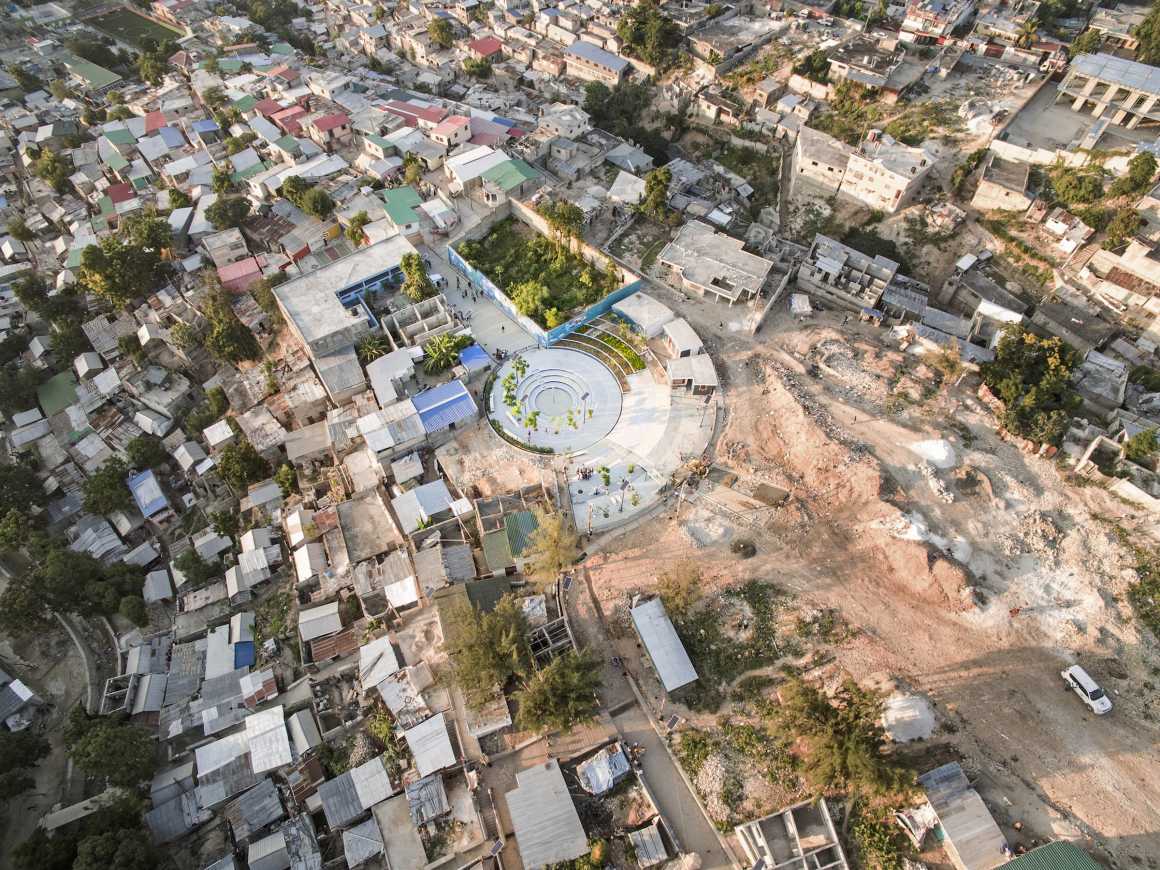
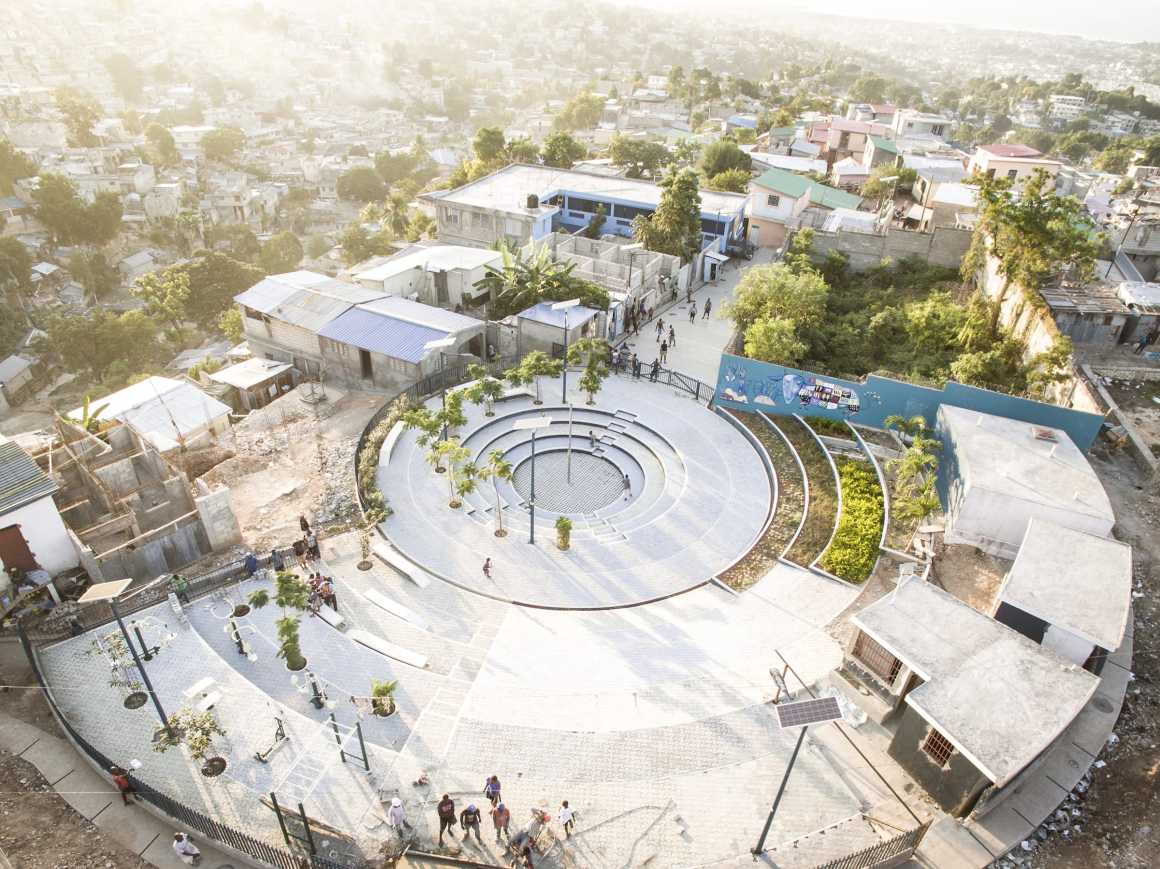
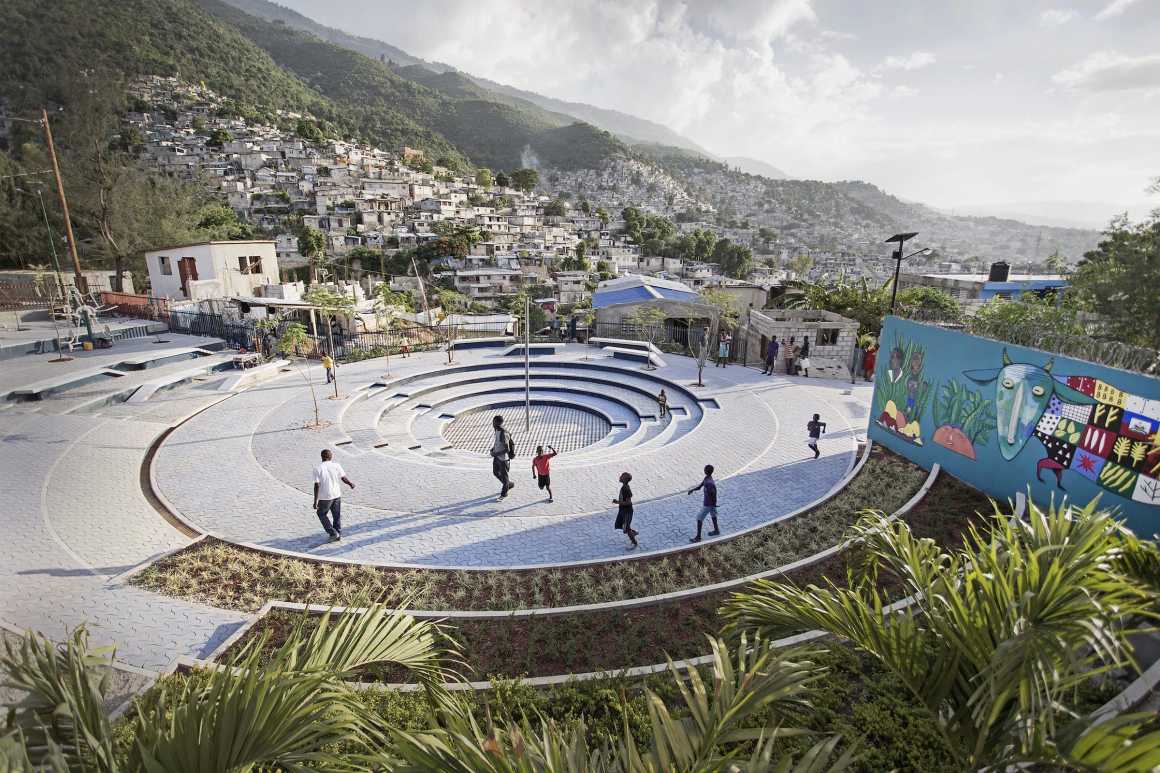

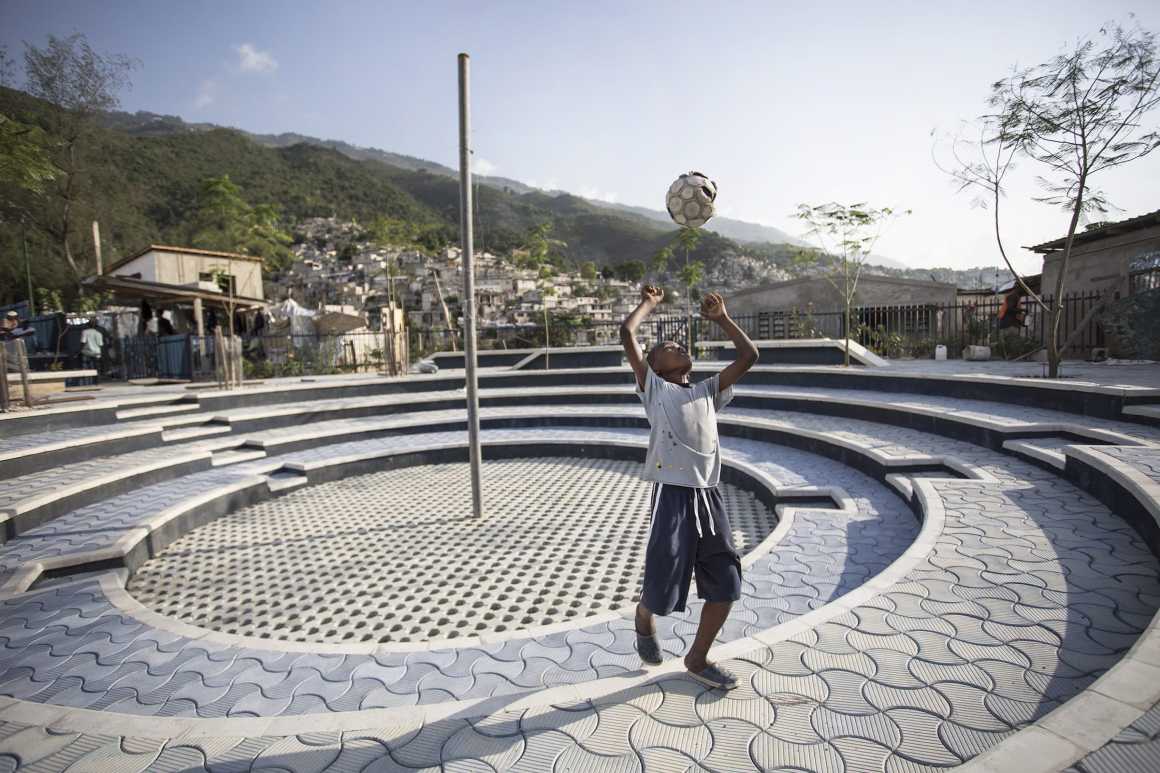
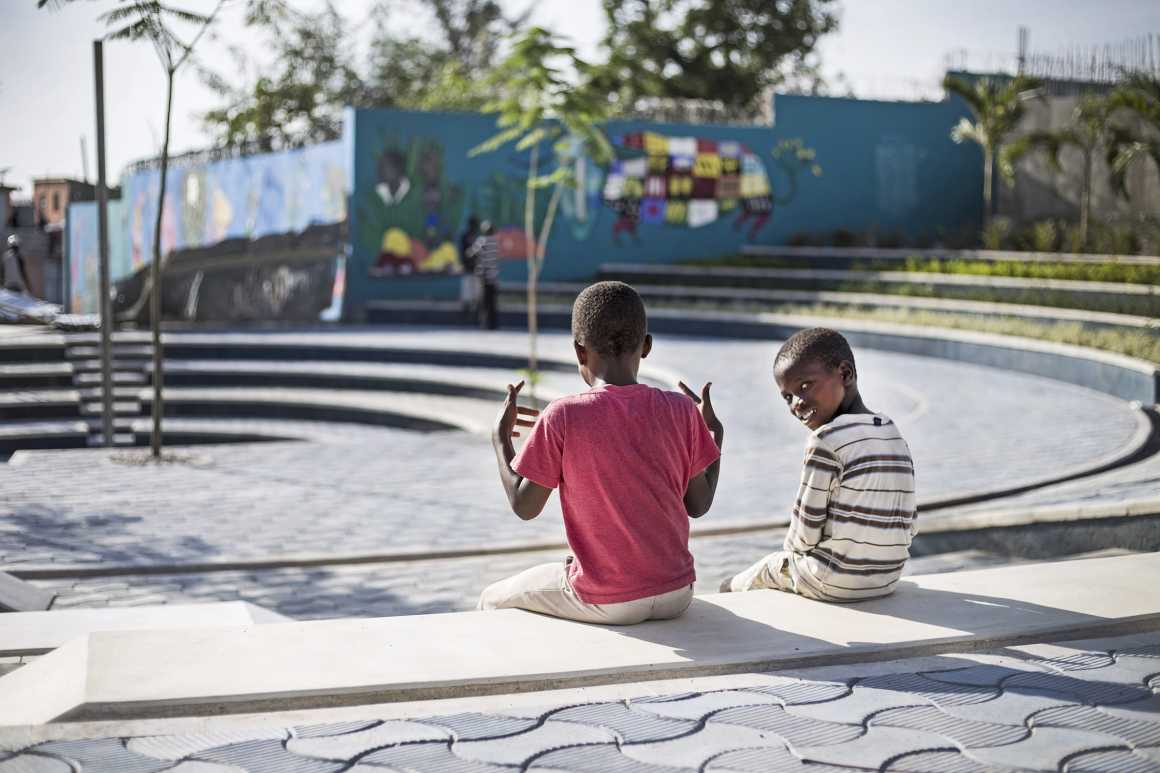
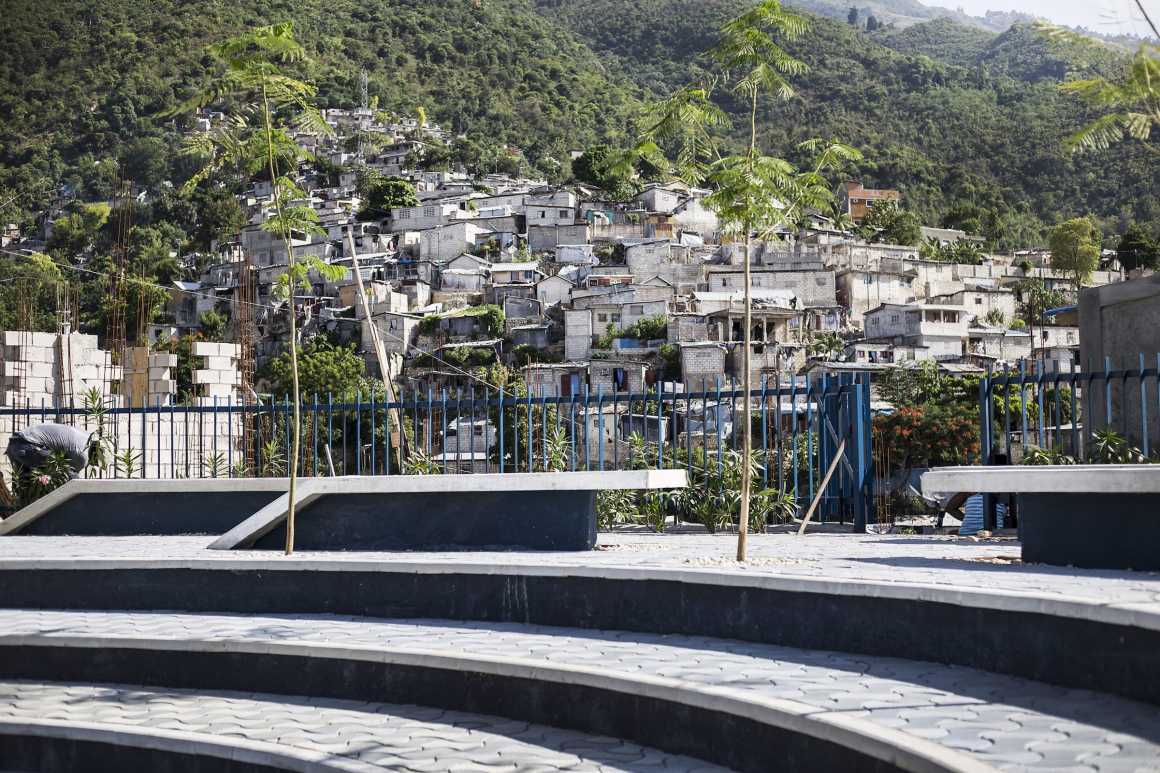


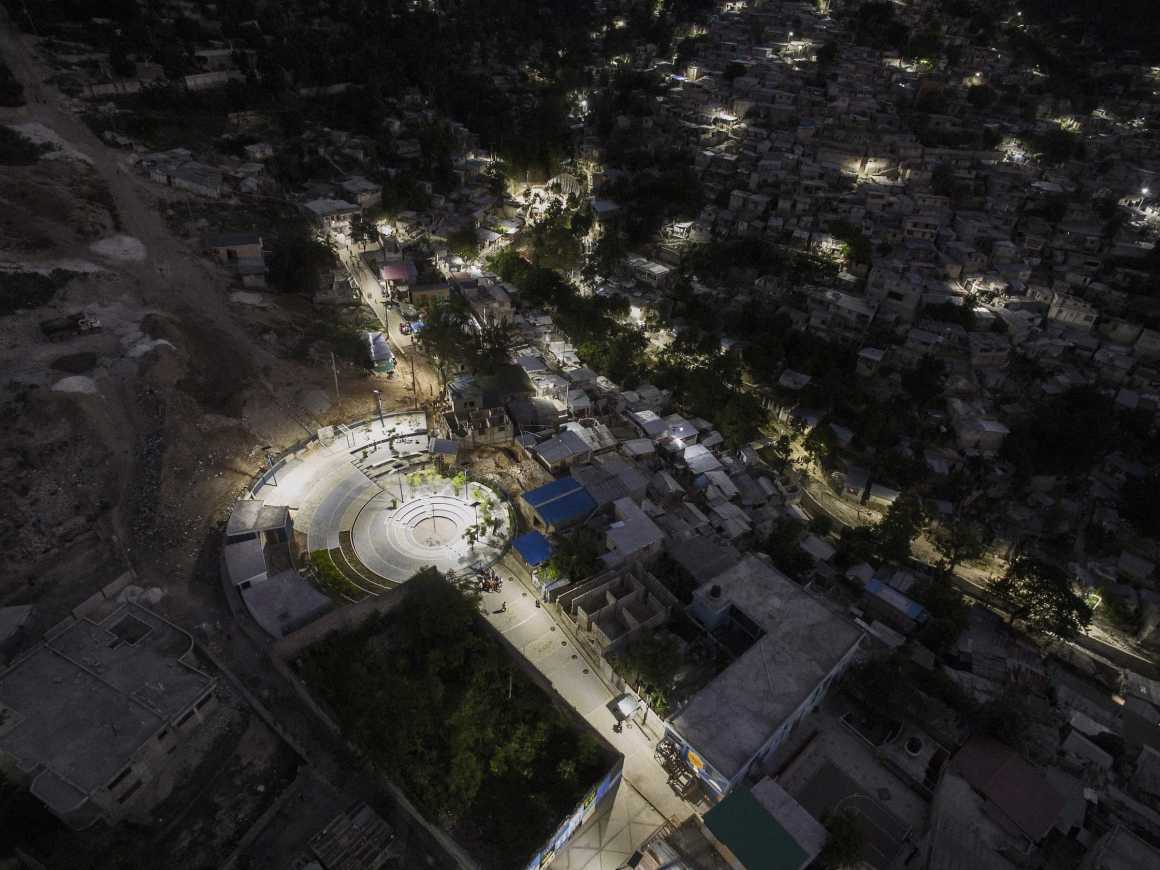


0 Comments